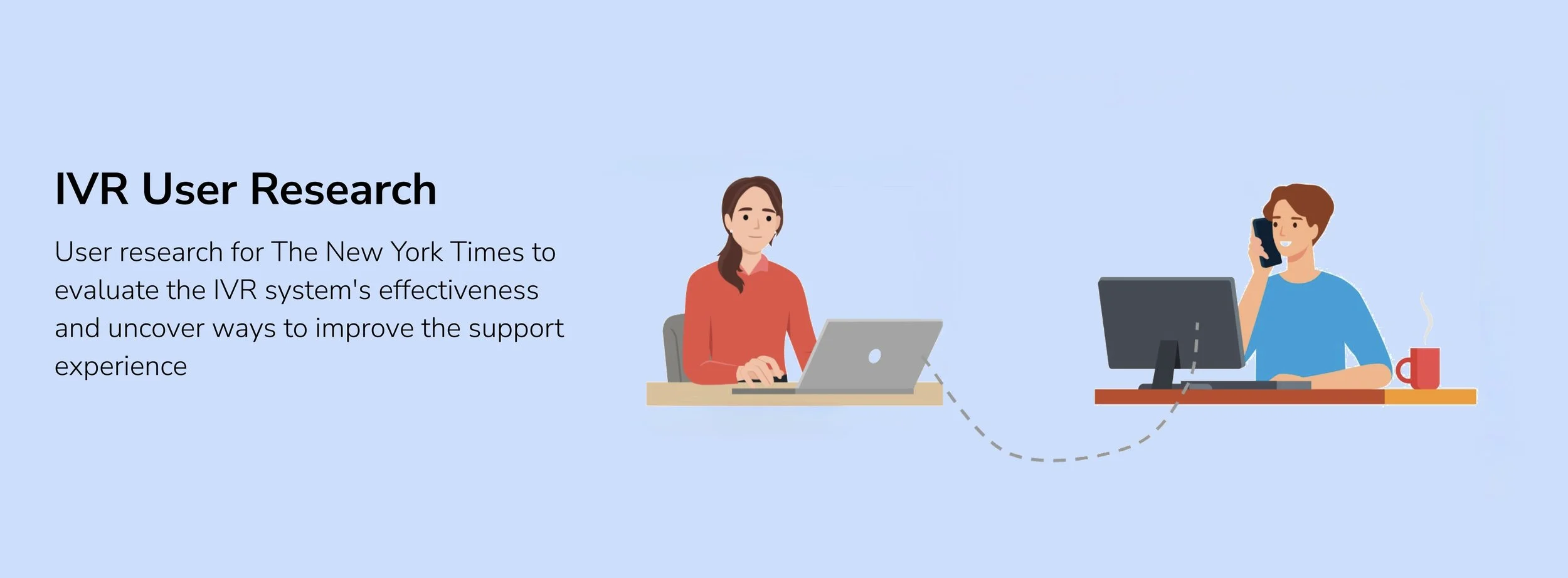
The Interactive Voice Response (IVR) system is an automated phone system that allows New York Times subscribers to perform tasks like suspending delivery or reporting a missing paper without speaking to a live agent. While IVR systems are a common tool for customer support across many companies, users often prefer agent-assisted options even when the automated system is fully capable of handling their requests.
The IVR has room for improvement, as it doesn’t always effectively contain subscribers within the self-service flow. Exploring ways to improve containment could reduce the number of issues handled by agents, saving costs and helping users who truly need live support get assistance more quickly and easily. To better understand how the system could be improved, we spoke with subscribers about their experiences using the IVR.
Goal
We wanted to understand how well the IVR system meets subscriber needs, how difficult it is to use, and what factors shape users’ opinions of its effectiveness.
Methodology
We conducted 10 qualitative interviews with Home Delivery subscribers who had experience using the IVR. Participants were first asked a range of questions about their impressions of the system and what they felt could improve the overall experience.
We then guided participants through a simulated version of the IVR system and asked follow-up questions about the simulation. Subscribers were encouraged to be honest in their responses and to approach the exercise as if they were calling for real support.
Research Conclusions
We uncovered valuable feedback on why some subscribers choose not to use the IVR, even when it can address their needs. We presented our team with potential recommendations that we gathered from the user feedback that could be added to strengthen the IVR in the future. The suggestions we collected aim to improve containment and bring forward user perspectives that had not previously been surfaced.
While I cannot share the full scope of this project due to its confidential nature, I’ve included this brief explanation in my portfolio because it was my first opportunity to conduct research that directly impacted a real product. Although my primary passion is design, I deeply value and understand the role of research in creating thoughtful, effective user experiences.
I’m proud to have contributed to meaningful research at The New York Times and am especially grateful to my research partner and mentor, Nic, who generously shared his knowledge and made this a true learning experience. I’m also thankful to my department and team leadership for this growth and career opportunity, it’s one I’ll always treasure.


